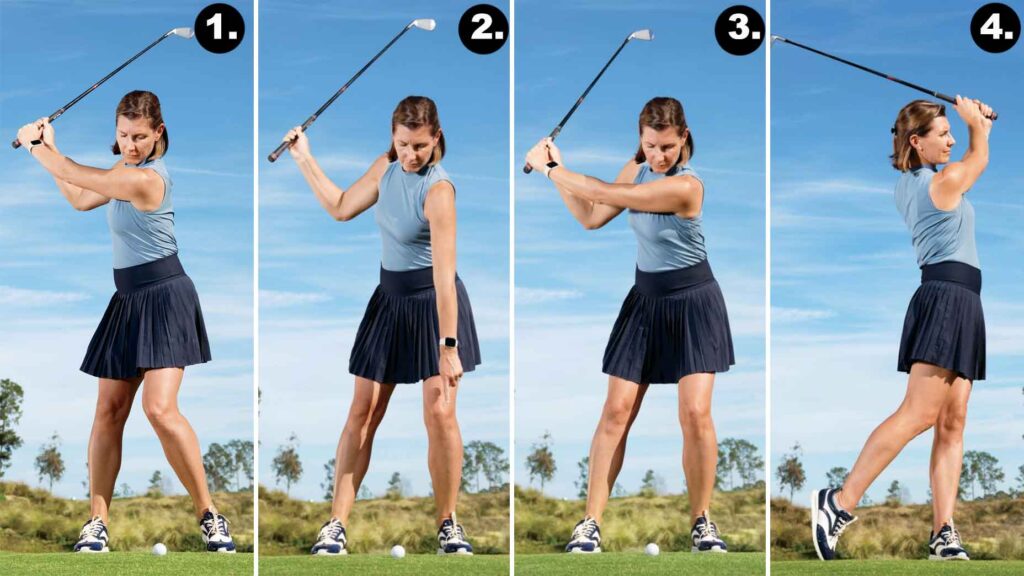Mastering the Golf Swing: The Power of Pressure and Pivot
Golf is a game of precision, patience, and technique. Every golfer, from beginners to seasoned pros, strives for that perfect swing. One fundamental aspect that can make or break your swing is understanding the relationship between pressure and pivot. In this comprehensive guide, we’ll delve into these concepts and explore how mastering them can lead to more solid hits, less swing errors, and a better overall golf experience.
Understanding the Swing Mechanics
The golf swing may seem straightforward, but it involves intricate mechanics that require practice and understanding. At its core, a good swing relies on your ability to effectively manage weight distribution and body movement. The relationship between the pressure exerted on the ground and the pivot actions in your swing is crucial for hitting the ball with both power and accuracy.
To begin with, envision your swing as a series of movements that must be interconnected. As you set up for your shot, it’s essential to establish a proper stance, allowing your body to feel balanced. This balance will set the stage for the pressure and pivot actions that follow.
The Role of Pressure in Your Swing
Pressure is a vital component of a successful swing. Think of it as the force you generate through your feet into the ground. This force serves as the foundation for your swing and allows for maximum energy transfer when the club meets the ball.
When you start your swing, initiate by driving your trail foot firmly into the ground. This action creates a solid base, enabling your body to turn behind the ball smoothly. This body rotation, combined with your arm movement, allows you to achieve the optimal position at the top of your backswing.
The Importance of Pivoting
Pivoting is the action that will help you unwind your body during the downswing. After establishing pressure on your trail foot, it’s time to transfer that energy to the front. This transition is where the concept of pivoting plays a key role.
As you begin your downswing, focus on adding pressure to your front foot by actively pressing it into the ground. This action creates a strong base from which your body can effectively rotate toward the target. A well-timed pivot in conjunction with that pressure will unleash the stored energy built up during your backswing.
Creating Potential Energy
Combining pressure and pivoting effectively not only improves your swing mechanics but also generates massive potential energy. This energy is crucial for achieving distance without sacrificing accuracy.
By maintaining the correct weight distribution and staying centered over the ball throughout your swing, you’ll experience a more dynamic and powerful hit. The end result? Watching the ball fly straight and far, turning that frustrating slice into a satisfying straight drive.
Staying Centered and Balanced
One of the most beneficial aspects of mastering pressure and pivot is the improvement in your overall balance. When you focus on these components, you’ll find it easier to remain centered over the ball.
This balance is pivotal for tracking the ball on your follow-through. As you maintain your focus on the target, your eyes will help you follow the ball as it sails through the air. There’s truly nothing more rewarding than connecting with the ball and witnessing its beautiful arc against the sky.
The Mental Aspect of the Swing
While physical mechanics are crucial, your mental approach to the game plays an equally significant role. Understanding the importance of pressure and pivot can simplify your thought process during a swing.
Visualization techniques can be incredibly beneficial. Before taking your shot, imagine the movement of your feet and the pressure building before the pivot. This mental rehearsal solidifies the connection between your mind and body, resulting in improved performance on the course.
Drills to Enhance Pressure and Pivot
To truly master pressure and pivot, incorporating specific drills into your practice routine is essential. One effective drill is the "Pressure Drill." Start by hitting balls focusing solely on your feet. As you swing back, concentrate on driving your trail foot into the ground. Then, during the downswing, emphasize applying pressure to your front foot.
Another valuable drill is the "Pivot Drill." Practice swinging without hitting a ball, focusing solely on the pivot motion. This will help reinforce the muscle memory needed to execute the pivot correctly in real-game situations.
The Coach’s Perspective
As a GOLF Top 100 Teacher, I’ve seen firsthand the impact that mastering pressure and pivot can have on a golfer’s swing. These principles not only alleviate swing errors but also empower players with the knowledge to self-correct. Implementing these techniques into your routine can lead to tremendous gains in performance.
Teaching students to feel the pressure build during their backswing and effectively pivot during their downswing transforms their game. Observing these changes in my students continues to bolster my passion for instruction.
Conclusion: Elevate Your Game with Pressure and Pivot
In conclusion, mastering the concepts of pressure and pivot in your golf swing is fundamental for any golfer looking to improve their game. By understanding how to generate pressure before pivoting, you can enhance your swing mechanics and overall performance.
With practice, patience, and the right mindset, these principles will help you become a more formidable player on the course. So, before your next round, take a moment to reflect on the relationship between pressure and pivot and watch your golf game soar to new heights. Whether you’re an amateur or a seasoned pro, there’s always room for growth and improvement in this beautiful game.


